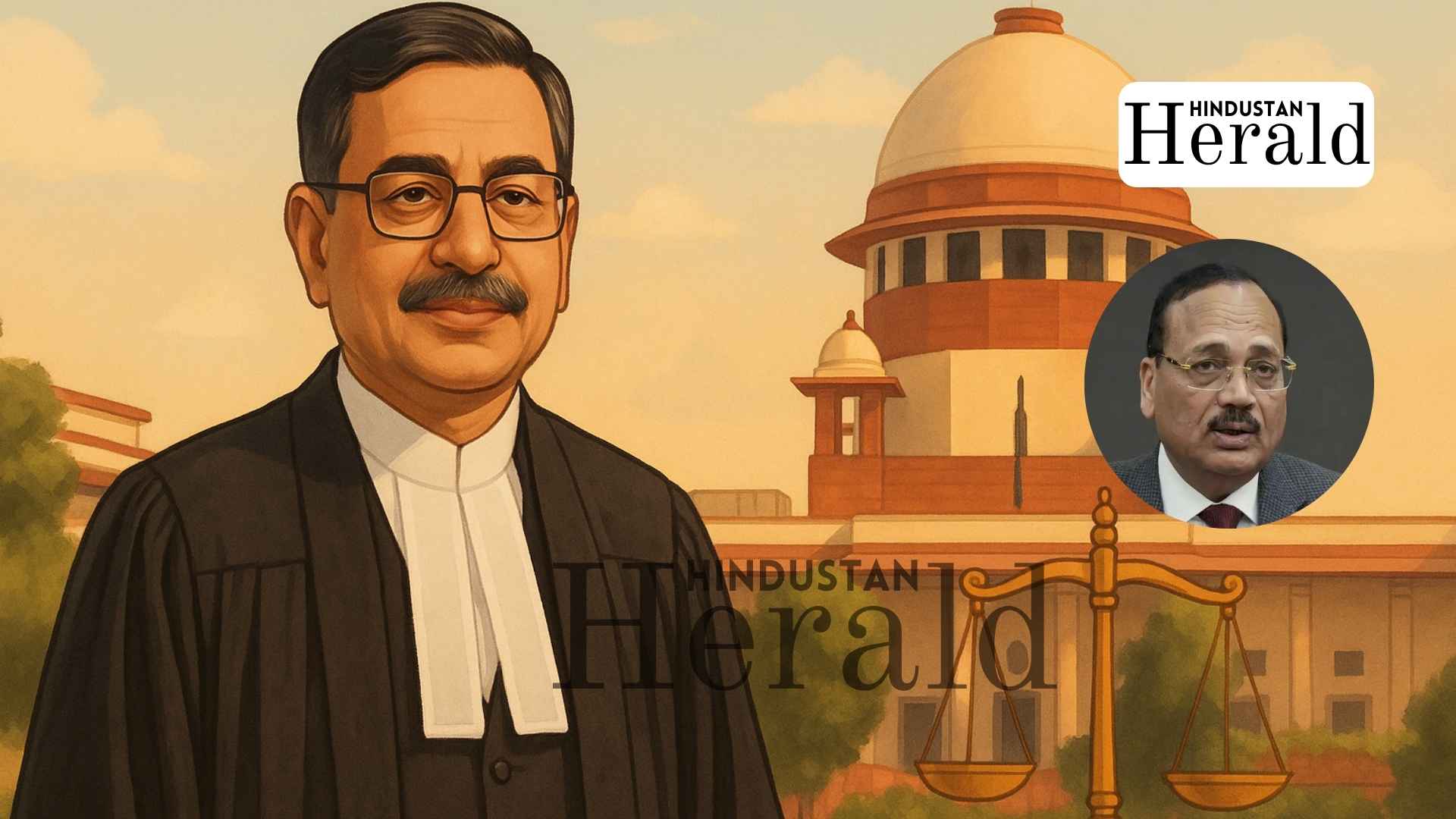New Delhi, October 28: There was nothing grand about it. No camera flashes, no applause. Inside the Supreme Court, Chief Justice Bhushan Ramakrishna Gavai simply reached into his file, took out a folded sheet of paper, and handed it to Justice Surya Kant. A few judges smiled, some nodded. It lasted barely a minute but it sealed the next chapter of the country’s judiciary.
That short letter named Justice Surya Kant as the next Chief Justice of India. He will take over on November 24, 2025, the day after Gavai retires. The handover followed the usual convention of seniority, yet it carries a quiet historic note: for the first time, someone from Haryana will occupy the top chair in the Supreme Court.
A Judge Who Built His Own Way Up
Justice Surya Kant’s story starts far from Delhi’s marble courts. He was born in Hisar in 1962, in an ordinary family that never imagined one of its sons would one day lead the judiciary. He studied law at Maharshi Dayanand University, Rohtak, finishing as a gold medallist, a detail that often gets repeated, though he rarely mentions it himself.
He began his practice in the Punjab and Haryana High Court, not in the capital’s elite chambers but in small courtrooms filled with wooden benches and ceiling fans that groaned in the summer heat. His reputation grew quietly. By 2001, he was on the High Court bench. Later he served as Chief Justice of the Himachal Pradesh High Court, before being elevated to the Supreme Court in 2019.
There was no single turning point in that rise, just years of steady, careful work. Lawyers who’ve appeared before him say he listens more than he speaks, and when he finally does, it’s with precision. “He doesn’t need to raise his voice,” one senior advocate from Chandigarh said. “You understand he’s made up his mind by the tone of his question.”
The Thinking Judge
In the Supreme Court, Justice Surya Kant made his mark through judgments that pushed the court toward balance rather than bravado. He was on the bench that effectively froze the sedition law, stopping new FIRs until the government could review the statute. For many, it was a signal that the court was willing to stand up for free speech even while waiting for Parliament to act.
He has ruled in favour of gender equality, fair administrative process, and accountability in public office. His writing avoids theatrics, short sentences, clear reasoning, and a sense that the Constitution is a living document, not an antique. Colleagues often say he embodies “calm judicial activism” , firm about rights, cautious about spectacle.
That balance will be tested soon enough.
A Heavy Desk Awaits
The Supreme Court he will lead in 2025 is creaking under pressure. More than 90,000 cases are pending, and the pace of hearings hasn’t kept up with public expectations. Digital reforms have begun, but unevenly. The collegium system faces renewed scrutiny. And public trust, once unquestioned, now needs constant tending.
Beyond the numbers, there’s a larger climate of unease between the judiciary and the government. Recent years have seen tension over judicial appointments and Centre–State disputes. Justice Surya Kant will have to hold the line: cooperative enough to keep the system running, firm enough to defend its independence.
Those who know him describe him as a consensus-builder, someone who avoids confrontation until it becomes unavoidable. It’s a skill the institution badly needs.
The Handing Over
According to The Times of India, the recommendation followed the long-standing Memorandum of Procedure. No surprises there. But people present say CJI Gavai’s tone that day carried warmth more than formality. He reportedly praised Justice Surya Kant’s “judicial balance and integrity,” calling him the right person for the moment.
When the brief ceremony ended, judges returned to their chambers. The Law Ministry soon began moving the file through official channels first to the Prime Minister’s Office, then to Rashtrapati Bhavan. The actual appointment will be signed by the President, probably sometime next month.
In the court corridors, though, the moment felt lighter almost familial. “Everyone knew it was coming,” a senior court officer said. “Still, when it finally happens, it feels bigger than it sounds.”
A Hometown Reacts
Back in Hisar, word spread quickly. Local bar associations lit up their WhatsApp groups, and younger lawyers shared photos from his early days at the district court. “It’s one of us,” one of them wrote. There’s real pride there Haryana has sent athletes to the Olympics, but never a Chief Justice to the Supreme Court.
Old-timers in Rohtak recalled seeing him walk into the courthouse on foot every morning, case files under his arm, always on time. “He was never the loudest voice in the room,” a retired advocate said. “But he always had the last word.”
What Comes Next
Justice Surya Kant’s tenure will last a little over a year, ending in February 2027. Short, yes, but long enough to make a mark. Insiders say he will likely focus on speeding up hearings, strengthening regional benches, and improving case management.
There’s also an expectation he’ll steer the court through debates over the new criminal codes, electoral reforms, and digital privacy laws. Each of these cases carries high political voltage. His test will be to keep the institution above the noise.
People who’ve seen him work believe he will. “He doesn’t dramatise his role,” said one senior lawyer. “He just believes in getting it right.”
A Simple Story in Complicated Times
It’s easy to miss the weight of such transitions. The Supreme Court has changed chief justices 52 times before, each one following the same script. Yet every so often, a new face reminds the country why these rituals matter.
Justice Surya Kant’s story small-town boy, top of his class, years of steady service isn’t rare in India. What’s rare is how quietly it’s unfolded. In a system often dominated by power networks and publicity, his rise feels refreshingly earned.
When he takes the oath next November, he’ll do so in a courtroom heavy with history and light filtered through tall glass windows. The oath is brief, but the responsibility is not. Somewhere between Hisar and Tilak Marg, another reminder has arrived that the country’s institutions, when they work as they should, still have a way of rewarding patience and principle.
Stay ahead with Hindustan Herald — bringing you trusted news, sharp analysis, and stories that matter across Politics, Business, Technology, Sports, Entertainment, Lifestyle, and more.
Connect with us on Facebook, Instagram, X (Twitter), LinkedIn, YouTube, and join our Telegram community @hindustanherald for real-time updates.
Covers Indian politics, governance, and policy developments with over a decade of experience in political reporting.






